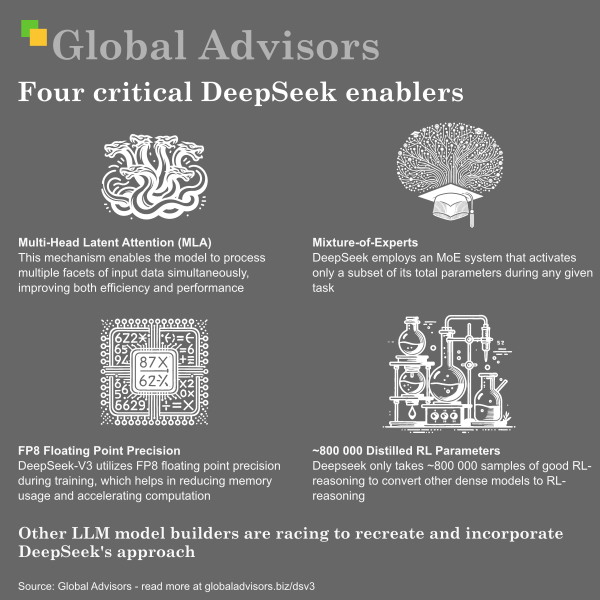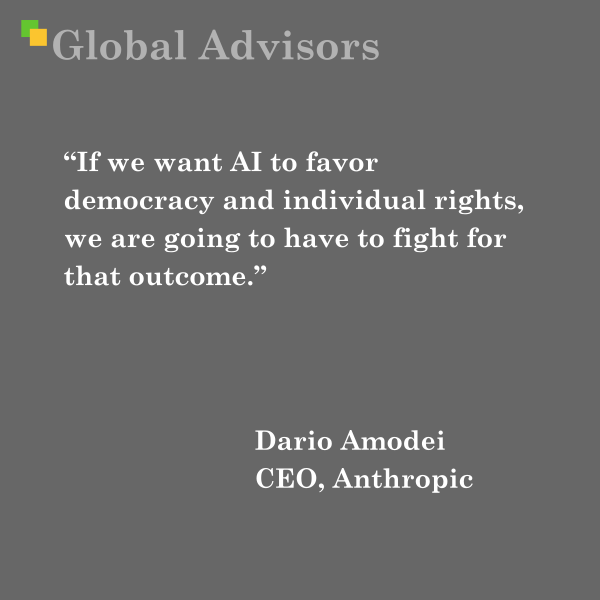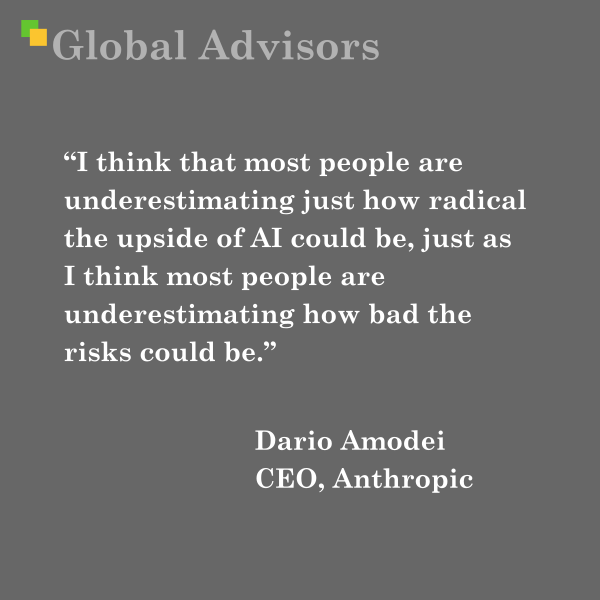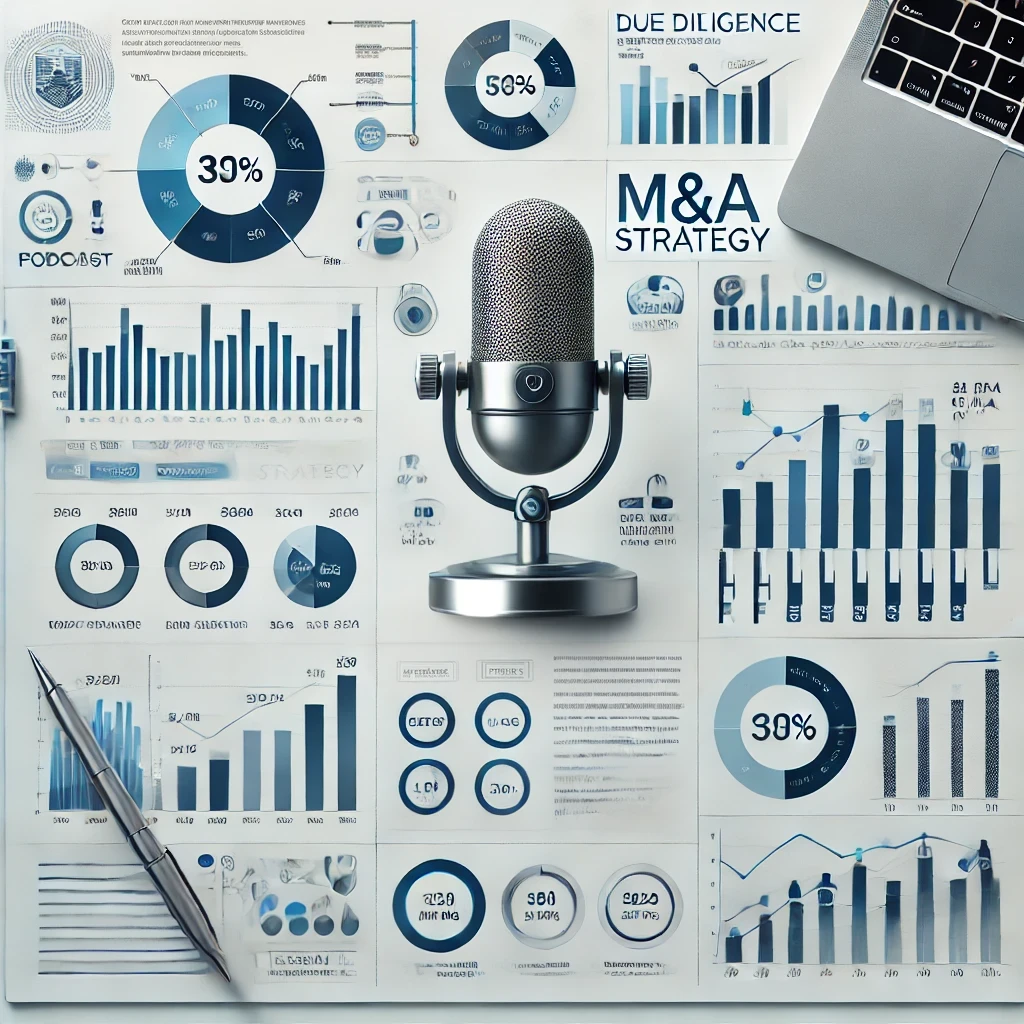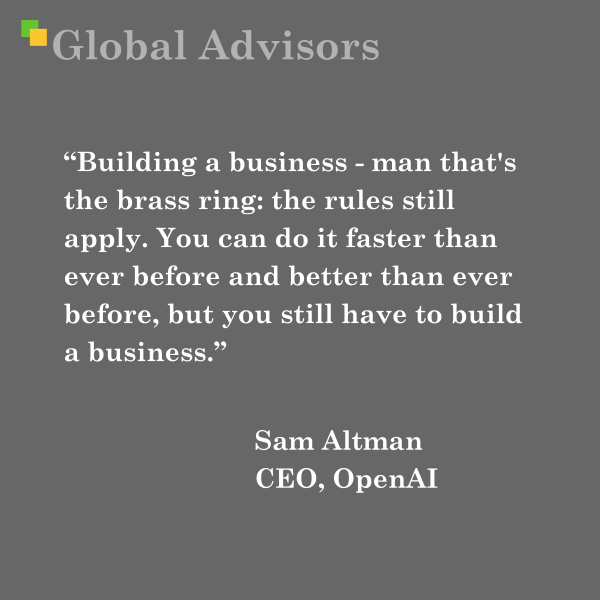| |
|
| |
| |
| |
|
Our selection of the top business news sources on the web. |
| |
| |
| |
Infographic: Four critical DeepSeek enablersThe DeepSeek team has introduced several high-impact changes to Large Language Model (LLM) architecture to enhance performance and efficiency:
The Impact of Open-Source Models:DeepSeek's success highlights a fundamental shift in AI development. Traditionally, leading-edge models have been closed-source and controlled by Western AI firms like OpenAI, Google, and Anthropic. However, DeepSeek's approach, leveraging open-source components while innovating on training efficiency, has disrupted this dynamic. Pelliccione notes that DeepSeek now offers similar performance to OpenAI at just 5% of the cost, making high-quality AI more accessible. This shift pressures proprietary AI companies to rethink their business models and embrace greater openness. Challenges and Innovations in the Chinese AI Ecosystem:China's AI sector faces major constraints, particularly in access to high-performance GPUs due to U.S. export restrictions. Yet, Chinese companies like DeepSeek have turned these challenges into strengths through aggressive efficiency improvements. MLA and FP8 precision optimizations exemplify how innovation can offset hardware limitations. Furthermore, Chinese AI firms, historically focused on scaling existing tech, are now contributing to fundamental advancements in AI research, signaling a shift towards deeper innovation. The Future of AI Control and Adaptation:DeepSeek-R1’s approach to training AI reasoners poses a challenge to traditional AI control mechanisms. Since reasoning capabilities can now be transferred to any capable model with fewer than a million curated samples, AI governance must extend beyond compute resources and focus on securing datasets, training methodologies, and deployment platforms. OpenAI has previously obscured Chain of Thought traces to prevent leakage, but DeepSeek’s open-weight release and published RL techniques have made such restrictions ineffective. Broader Industry Context:
These innovations collectively contribute to more efficient and effective LLMs, balancing performance with resource utilization while shaping the future of AI model development. Sources: Global Advisors, Jack Clark - Anthropic, Antoine Blondeau, Alberto Pelliccione, infoq.com, medium.com, en.wikipedia.org, arxiv.org |
| |
| |
PODCAST: Effective Transfer PricingOur Spotify podcast discusses how to get transfer pricing right. We discuss effective transfer pricing within organizations, highlighting the prevalent challenges and proposing solutions. The core issue is that poorly implemented internal pricing leads to suboptimal economic decisions, resource allocation problems, and interdepartmental conflict. The hosts advocate for market-based pricing over cost recovery, emphasizing the importance of clear price signals for efficient resource allocation and accurate decision-making. They stress the need for service level agreements, fair cost allocation, and a comprehensive process to manage the political and emotional aspects of internal pricing, ultimately aiming for improved organizational performance and profitability. The podcast includes case studies illustrating successful implementations and the authors' expertise in this field. Read more from the original article.
|
| |
| |
PODCAST: A strategic take on cost-volume-profit analysisOur Spotify podcast highlights that despite familiarity, most managers do not apply CVP analysis and get it wrong in its most basic form. The hosts explain cost-volume-profit (CVP) analysis, a crucial business tool often misapplied. It details the theoretical underpinnings of CVP, using graphs to illustrate relationships between price, volume, and profit. The hosts highlight common errors in CVP application, such as neglecting volume changes after price increases, leading to the "margin-price-volume death spiral." The hosts offer practical advice and strategic questions to improve CVP analysis and decision-making, emphasizing the need for accurate costing and a nuanced understanding of market dynamics. Finally, the podcast provides case studies illustrating both successful and unsuccessful CVP implementations. Read more from the original article.
|
| |
| |
Quote: Dario Amodei"If we want AI to favor democracy and individual rights, we are going to have to fight for that outcome." Dario Amodei
|
| |
| |
Quote: Dario Amodei"It’s my guess that powerful AI could at least 10x the rate of these discoveries, giving us the next 50-100 years of biological progress in 5-10 years." Dario Amodei Gimg src="https://globaladvisors.biz/wp-content/uploads/2024/11/20241120_13h00_GlobalAdvisors_Marketing_Quote_DarioAmodei_MW.png"/> |
| |
| |
Quote: Dario Amodei“I think that most people are underestimating just how radical the upside of AI could be, just as I think most people are underestimating how bad the risks could be.” - Dario Amodei
|
| |
| |
Quote: Sam Altman“Build a company that benefits from the model getting better and better ... I encourage people to be aligned with that.” - Sam Altman
|
| |
| |
PODCAST: Your Due Diligence is Most Likely WrongOur Spotify podcast explores why most mergers and acquisitions fail to create value and provides a practical guide to performing a strategic due diligence process. The hosts The hosts highlight common pitfalls like overpaying for acquisitions, failing to understand the true value of a deal, and neglecting to account for future uncertainties. They emphasize that a successful deal depends on a clear strategic rationale, a thorough understanding of the target's competitive position, and a comprehensive assessment of potential risks. They then present a four-stage approach to strategic due diligence that incorporates scenario planning and probabilistic simulations to quantify uncertainty and guide decision-making. Finally, they discuss how to navigate deal-making during economic downturns and stress the importance of securing existing businesses, revisiting return measures, prioritizing potential targets, and factoring in potential delays. Read more from the original article.
|
| |
| |
Quote: Sam Altman“Building a business - man that's the brass ring: the rules still apply. You can do it faster than ever before and better than ever before, but you still have to build a business.” - Sam Altman
|
| |
| |
Quote: Andrew Ng"We're making this analogy that AI is the new electricity. Electricity transformed industries: agriculture, transportation, communication, manufacturing." -Andrew Ng
|
| |
| |
|
| |
| |

